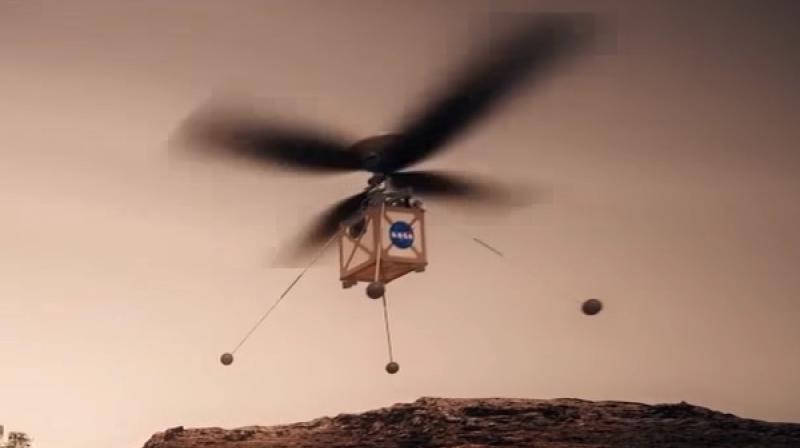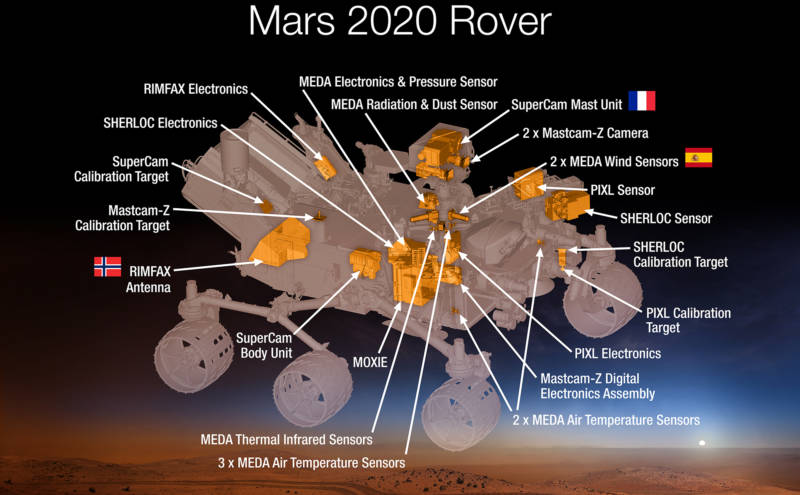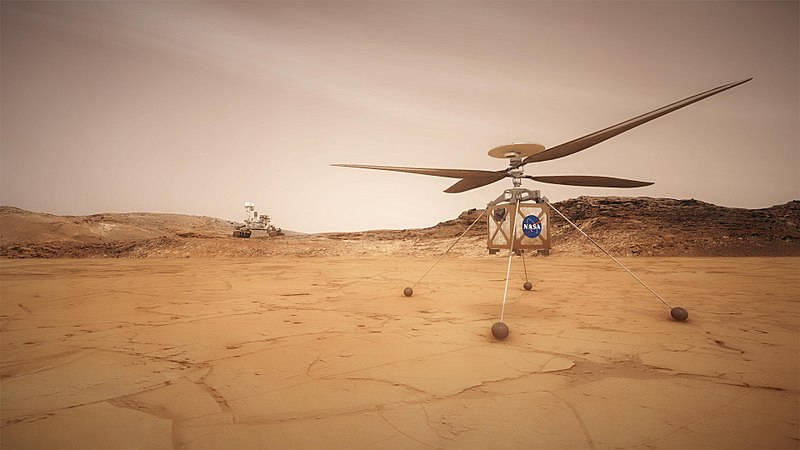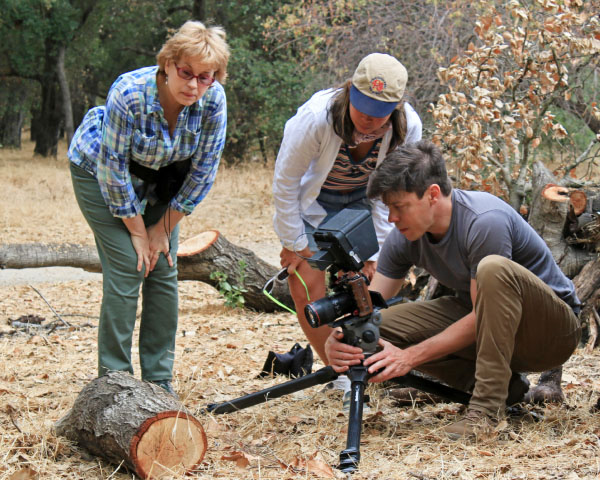Get ready for your next big Martian adventure!
It’s not a Hollywood epic about the stranding and rescue of a lone astronaut, but a real-world expedition: the Mars 2020 rover mission.
And NASA’s newest robot explorer isn’t going alone. Mars 2020 is being accompanied by the first-of-its-kind Mars Helicopter. Yes, in this case, NASA saved its innovation for the engineering, not the nomenclature.
Mars Helicopter
In late January, the fully assembled softball-sized, 4-pound robot with twin rotors was tested at the Jet Propulsion Laboratory in Pasadena, California.
In a chamber that replicates the actual conditions on Mars that the helicopter must endure, temperatures were set as low as minus-130 degrees Fahrenheit, with a simulated atmosphere of carbon dioxide equivalent to the atmospheric pressure at 100,000 feet on Earth. (The highest altitude reached by a helicopter here on this planet was 29,000 feet, where it landed on the peak of Mount Everest.)

Even Mars’ lower-surface gravity, one-third of Earth’s, was simulated during test flights, with a special tether providing a constant upward tug.
Mars Helicoper passed its two hovering test flights with flying colors, so to speak. The next time the helicopter takes off will be on Mars, in early 2021.
The Future of Martian Flight
Mars Helicopter is accompanying its mother-ship rover as a demonstration of technology that can be put to use on future missions — a beta test to see how well the technology performs on Mars, and to learn what features and capabilities might be included in next-generation copters.
Rovers are great for getting around on the surface of another planet, but the six-wheeled robots can’t roam everywhere; some terrain is navigationally challenging or simply impassable.
But a rover with a tiny solar-powered, flying camera-bot can deploy it to get close looks at intriguing geological features, scout what’s on the other side of hills and ridges that the rover can’t get to, and maybe even collect rock and soil samples over a wide range of territory.
Mars scientists are probably waking up late at night imagining how to put future whirly-bots to use.
Mission of Mars 2020
The exploration of Mars has been an exciting ongoing adventure for the past several decades, but Mars 2020 has the potential to deliver the most exciting news yet: evidence of past Martian life. Not since the Viking landers conducted inconclusive experiments to detect signs of present life has a mission looked for Martians.
Physically modeled after the rover Curiosity, which is presently looking for, and finding, clues to Mars’ past watery climate, one of Mars 2020’s objectives is to look for signs of anything that might have lived in those ancient seas and lakes.

Along with a suite of highly advanced scientific instruments, the rover is also carrying an experiment, MOXIE, to produce oxygen from Mars’ atmospheric carbon dioxide to test how future human explorers might produce breathable oxygen from the Martian environment.


